Why remake a 1947 film that has gained esteem over the last decades? After it initially disappointed at the box office, director Edmund Goulding’s Nightmare Alley has increased in popularity largely because of Tyrone Power’s menacing and smooth performance in a role that was a drastic departure for the matinee idol, and for its twisty story line. The gorgeous black-and-white cinematography by the great Lee Garmes fittingly captured the sheen and shadows of seedy carnival life, hucksterism, and ephemeral fame—you know a film has a seal of approval when it gets the Criterion Collection treatment.
Ostensibly, director Guillermo del Toro has chosen to take another stab in adapting the acclaimed 1946 William Lindsay Gresham novel by the same name, this time with more freedom, given that in 1947 the production code wouldn’t allow a seamy tale so pungent to be told fully intact. Still, the earlier movie is pretty bleak. Now, del Toro and co-screenwriter Kim Morgan add more graphic brutality. Where before the protagonist was brooding, he has become a ticking time bomb. As it did for Powers, the role of Stanton Carlisle—what an elegant name for a lethal antagonist—provides a potential showcase for Bradley Cooper, also one of the film’s executive producers.
A drifter on the run, Stan wanders toward the bright lights of a carnival on the outskirts of a Midwestern town and enters in. There, he’s given room and board for menial labor (it’s still the Depression, any money helps) and works his way up as a performer; his good looks serve him well as a touter. Learning the ropes from his fellow transients, he recognizes his meal ticket, the “code”—it’s literally a book—the bedrock of a telepathic act. With the aid of a fluent assistant who feeds him clues embedded in seemingly ordinary speech, a blindfolded Stan learns what object, for example, a stranger is holding. Once he has the secret to success, he and a willing Molly, aka Elektra, the electric girl (a fairly flat Rooney Mara), flee the carnival, and two years later, are a hit on the big city nightclub circuit. Stan gains further notoriety when he turns his act into a so-called “spook show,” communicating with the dead, although he’s warned more than once not to.
Like Power before him, the gravelly voiced Cooper sheds his good guy persona, and is often filmed with a wide lens so that the tip of his nose swells, making you think he was wearing a prosthetic nose when his looks turn to rot. Strangely, as a character whose modus operandi is to seduce, whether it’s Molly or a well-heeled audience, Cooper keeps his charm under his belt. He’s sullen and reserved, giving an internalized performance for an extroverted grifter.
Cate Blanchett, on the other hand, is given the full-on Hollywood glamour treatment, which is especially apt since she gives the one performance in the movie that could have jumped from 2021 back to the 1940s. As psychoanalyst Dr. Lilith Ritter, she slithers and glares while smoking with an elegance that hasn’t been allowed on screen in years. She plays style, while Cooper plays 2021 emotionally constrained substance. He and Blanchett make for a fascinating, disjointed pair.
Nevertheless, what film noir—which this still is even though it is shot in color, and heavy on garish reds—has a 150-minute running time? Were any of the classic noirs more than two hours? The 1947 version runs 110 minutes. Del Toro’s film becomes bloated early on, with way too much exposition. (Haven’t we learned anything from Peter Jackson’s three-hour-plus King Kong?)
Many scenes in the first half hour could have been left on the editing floor or trimmed as the narrative becomes lost in the atmosphere of carnival life, playing up its sordidness—like the camera’s lingering on a sideshow shot of jar containing a deformed baby preserved in alcohol. Because del Toro and Morgan’s screenplay overplays its hand in laying out that exposition so clearly, with Willem Dafoe as a carny barker essentially explaining how the dodgy carny world operates, all the audience has to do is wait for all the pieces to play out. You don’t need to read Tarot cards to get a whiff about what’s to happen. More effectively in the 1947 version, the filmmakers kept off screen the geek sideshow, which added to the fascination and horror of what was behind the tent.
However, taking a page from the thriller playbook, del Toro finally kicks the film into high gear in the last 45 minutes. After a sultry saunter, the pace takes off, leaving the shockers to the finale, which packs a punch while rest of the movie sleepwalks. At least del Toro knows how to leave the audience with their head spinning.

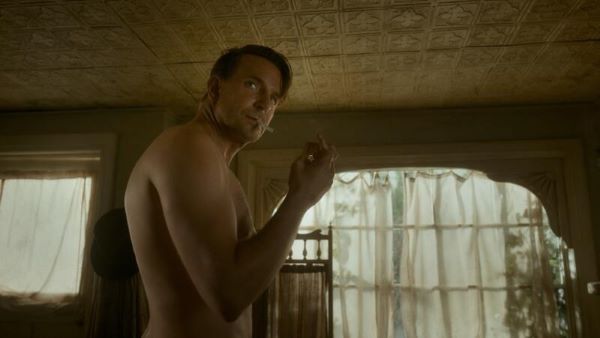
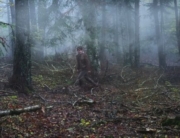
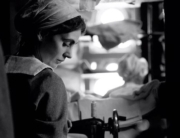

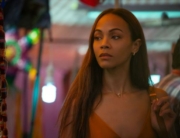
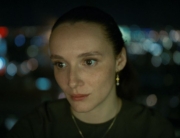










Leave A Comment